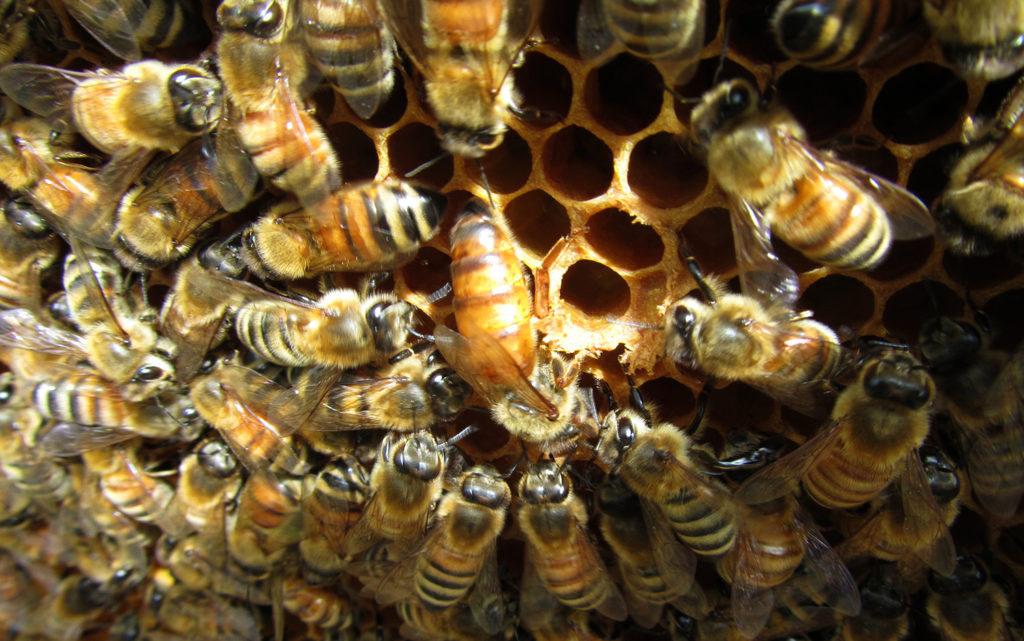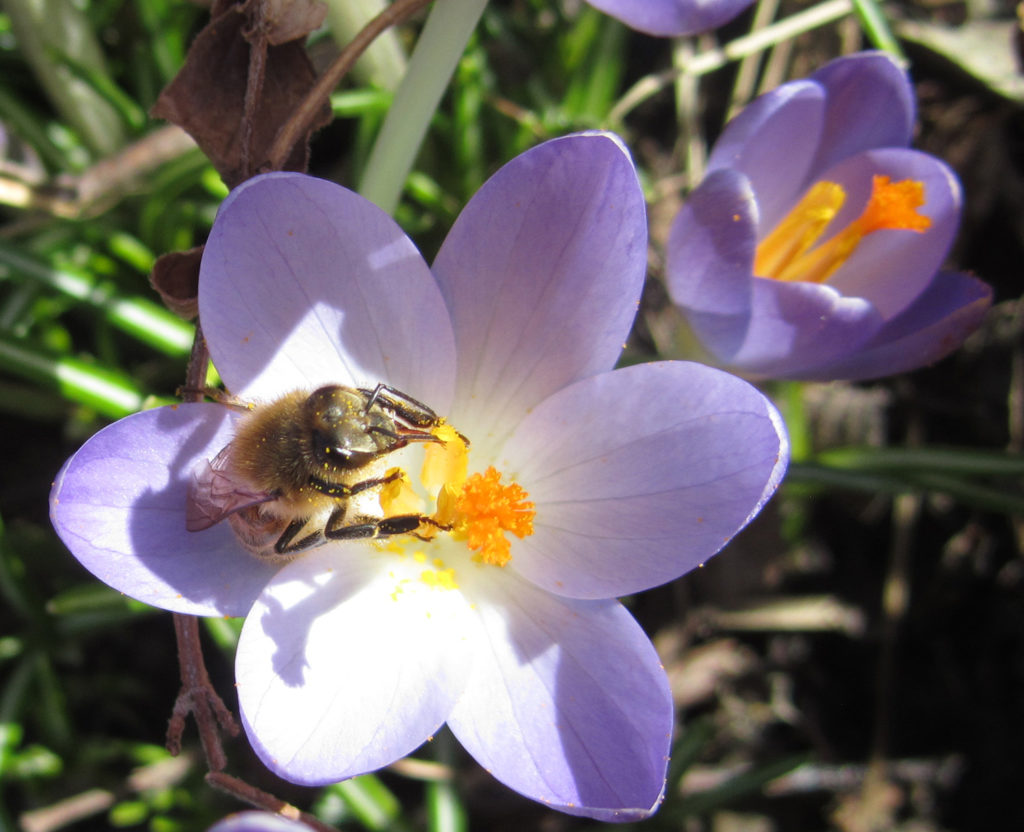Bee Lines: Re-creating biodiversity
by Sam Hall –
Biodiversity, the term I think can possibly best be defined as what it is not. It is not the planting of hundreds or thousands of acres of the same crop. In planting an orchard several years ago, not being a commercial farmer, I planted an eclectic orchard, that is I planted what I felt like never realizing that I was creating biodiversity in my orchard which is still thriving after 30+ years.
Jonathan Lundgan who was for many years employed with the USDA finally realized the way agriculture is currently being done will be unsustainable by the planet. He quit before he was fired as this thinking is not currently acceptable but it is beginning to catch on. He founded Blue Dasher Farms in South Dakota which is primarily for improving and finding new ways to encourage biodiversity in commercial agriculture. One of the areas he and his group of young technicians are doing is called “regenerative research”. I recommend taking a look at his website http://www.agweek.com/business/technology/4219375-blue-dasher-farm-embraces-regenerative-research
Diversity is not limiting what type of animals, insects and other live things are in a given area. When the Eastern Apicultural Society had it’s meeting a few years ago at the University of Guelp in Ontario, one of the speakers mentioned how much diversity existed in a pile of debris in an orchard. This debris was made up of limbs dead trees, leaves, roots, etc. Much like the pile that you may have in your yard and feel you need to get rid of. Fortunately, I have always had such a pile and now I can feel justified in not cleaning up such piles which are teeming with life including varieties of lichens and mosses which not only are diverse but beneficial to their surroundings not to mention the insect life.
As the days grow longer and the temperatures head toward moderation, a magical thing starts taking place within the honey bee colonies. In the fall when temperatures start falling below about 45 degrees the bees will form a cluster with the Queen near the center. The shivering of their bodies creates heat which individually would be nothing but with several thousand it becomes life saving. When the temperature in the fall goes up and down like it does now in the spring, the bees cluster and then un-cluster when it is warmer until sometime usually between Christmas and New Years they form what is termed the winter cluster. This does not mean they are permanently clustered for the winter but they will be clustered most of the time except when we have that occasional warm day. The temperature in the cluster until the past few days has been in the low 60 degrees.

Now to me is the magic time. The cluster has increased the temperature in the cluster to the low 90 degrees and the Queen is starting to lay eggs by the hundreds and even thousands. There is danger in this because in three days the eggs hatch into larvae which must be fed. At night due to the cold the bees will cover these larvae like a blanket keeping them warm. If there are too many larvae for the bees to cover adequately and the temperature dips enough several larvae will die. You will see these dead larvae on the landing boards of the hives as the bees remove them. Hopefully there are enough winter stores for the bees to adequately feed the larvae. To help them do this, three weeks ago I put sugar bricks above the holes in the inner covers. I then put an empty super on top to shield the inner cover and sugar brick then I placed a telescopic cover on top with a brick or stone on top of it to hold it down when the wind blows.
The reason for this dramatic change is that nature is preparing the way for the flowering of the maples and willows in March. Thousands of bees will be needed. The bees will be collecting pollen and nectar from these flowerings as well as pollinating the trees. Already when I look at the willow trees even though the catkins are not formed, there is a misty look when you try to look through the tree that was not there a couple of weeks ago.

These nectar and pollen sources will help the bees build up to really strong colonies in time for our first big nectar and pollen flow and that is dandelions. Depending on the weather, our dandelion flow will generally start in mid to late April. By that time nature wants the colonies to be ready to bring in this harvest.
We humans consciously or subconsciously believe that the earth was created and populated with animals purely for our pleasure, food and exploitation. If we humans disappeared today the earth would still be here and there would be thriving animal species and thriving insect populations. We are not indispensable except to ourselves.
To lessen our impact on the planet we need to go back in agriculture to the biodiversity that was practiced essentially until the second world war and large Conagra corporations came into existence.
We are all interconnected that includes animals, plants, trees, insects, all living things even humans. We need each other.
Sam Hall is a Western NY beekeeper who first worked bees as a child growing up on a ‘dirt farm’ in Allegany County, NY. He has kept bees for most of his adult life and believes that his mistakes ‘far outnumber his successes.’